9 Pressure Washing Tips Professionals Want You to Know
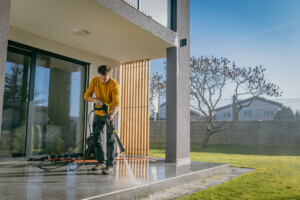
In the ongoing fight against dirt and grime, pressure washing wields transformative power. Pressure washing defends a property’s allure and integrity, from revitalizing weather-worn exteriors to rejuvenating dingy driveways. Using the powerful force of high-pressure water jets, this method goes beyond looks and plays a crucial part in keeping surfaces strong and lasting over time.
In this Redfin article, we’ll dive into the importance of pressure washing, uncovering its benefits and tips and tricks. So whether you’re enhancing the curb appeal for your house in Plymouth or restoring your home in Tallahassee, FL, read on to get started.
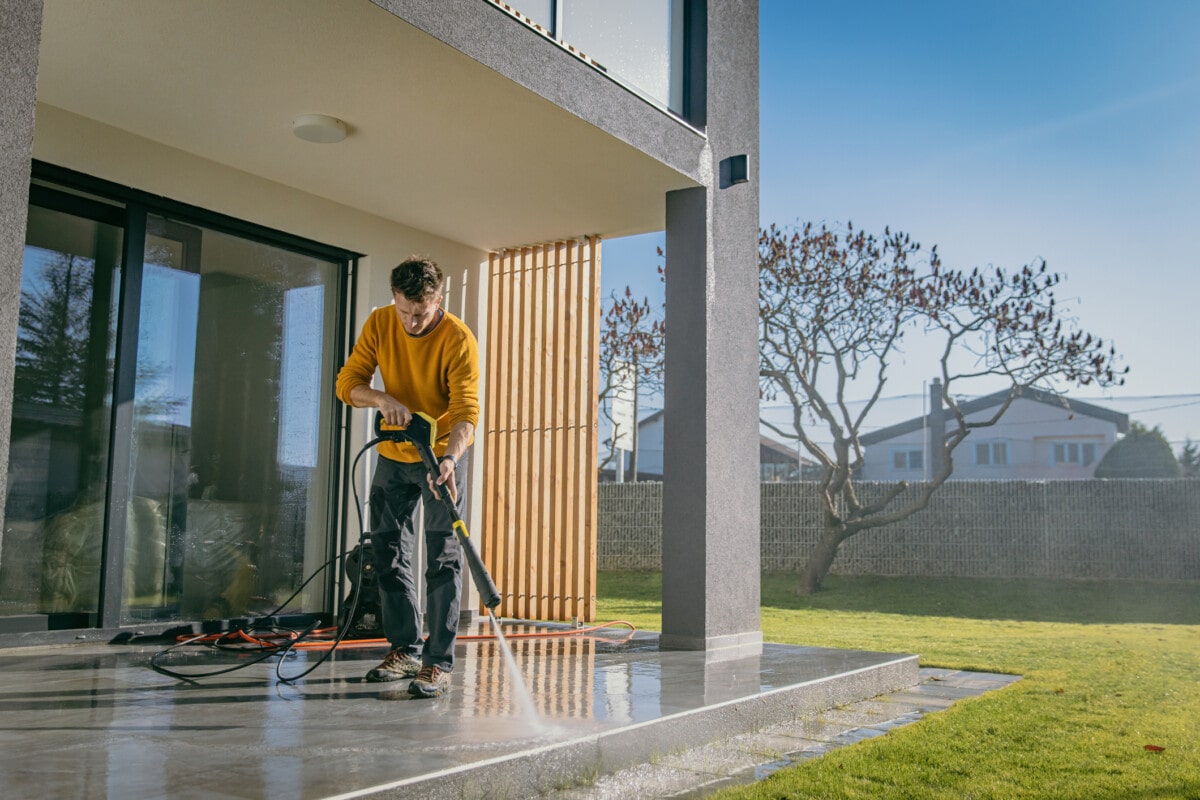
1. Prioritize safety measures while pressure washing
The forceful water jets produced by pressure washers can be hazardous if not handled carefully. Steps to safeguard against potential mishaps include wearing appropriate personal protective equipment (PPE) such as safety goggles, gloves, and non-slip footwear.
Generator Mart shares, “Be sure to wear ear and eye protection, as pressure washing units are loud and powerful. Additionally, clearing the work area of obstacles and ensuring bystanders are at a safe distance minimizes the risk of accidents.”
2. Know when to power wash and pressure wash
Knowing when to power wash instead of pressure wash is crucial for effective and safe cleaning. Power washing involves using hot water under high pressure, ideal for tackling tough stains, grease, and grime on surfaces like concrete driveways or industrial equipment. On the other hand, pressure washing uses cold water and is suitable for more delicate surfaces like wooden decks, or siding, as the lower pressure reduces the risk of damage.
“Most of our requests for services are for power washing, but in reality, we rarely use a power washer other than for cleaning concrete driveways,” says Clean by Gene. “The word (power) in power washing can represent up to 5000 psi for homeowner units, with most commercial power washers being used in the 3000 to 3500 psi range. That’s 3000 pounds of pressure per square inch. In comparison, a Honda Civic weighs around 3000 pounds. A power washer can cause some serious damage to many structures and severe personal injuries.”
”Depending on the type of surface, different levels of psi are recommended,” says Vericlean Services, a janitorial cleaning service. “Platforms, walls, and fences are recommended at 2000 psi, and large surfaces, patios, and concrete should be about 3000-3500 psi.”
3. Know which surfaces you can clean and which to avoid
While power washing can work wonders on robust materials like concrete driveways and stone pathways, more delicate surfaces such as painted wood or fragile stucco can sustain irreparable damage under high-pressure streams. Misguided pressure washing on these sensitive surfaces may result in peeling paint, chipped finishes, or even water intrusion into the underlying structure.
“We recommend avoiding windows when pressure washing your home because you run the risk of shattering them and having a bigger problem than you started with,” shares maintenance and facility service company MSNW Group. “It’s possible and beneficial to pressure wash windows, but it can be hazardous unless you hire a professional or do thorough research. Other surfaces to avoid include stained wood, aged wood, painted objects, and asphalt shingle roofing.”
4. Learn about the different cleaning solutions
Tailoring cleaning agents to the specific surface and type of grime ensures a more thorough and efficient outcome. For instance, an environmentally-friendly detergent might be the perfect match for lifting oil stains off a concrete driveway. At the same time, a mildewcide solution is indispensable for combating mold and mildew on wooden decks.
Specialized cleaners formulated for specific surfaces, like vinyl siding or brick, enhance the cleaning process and help prevent damage. However, exercising caution is vital, as using the wrong solution can lead to discoloration, erosion, or chemical reactions that worsen the stains you aim to remove.
5. Create a plan of action
Crafting a comprehensive plan of action beforehand helps prevent haphazard cleaning.
“Never start your pressure washing project without proper planning and strategy,” says Magic Wand Pros. “Determine what and how you want to clean areas on the exterior of your property. Some areas require a little preparation before using a pressure washer to clean your property. Proper planning ensures proper cleaning and safety throughout your cleaning project.”
6. Prep your property beforehand
Before pressure washing, you must take a few key steps to prep your property. Firstly, water your plants thoroughly to prevent them from absorbing the cleaning chemicals or being damaged by the pressure. Cover sensitive outdoor items like electrical outlets and delicate décor to shield them from water and debris. Lastly, clear the area of any loose objects, debris, or furniture to ensure a safe and effective pressure washing process.
Neptune Clean adds more about protecting your plants. “Hydrate all the plants and grass around your home to protect them from the cleaning agent. A thin coat of water fills the cells on the surface of the leaves, reducing exposure to the cleaner. If left unprotected, direct exposure to cleaning agents may burn leaves and grasses.”
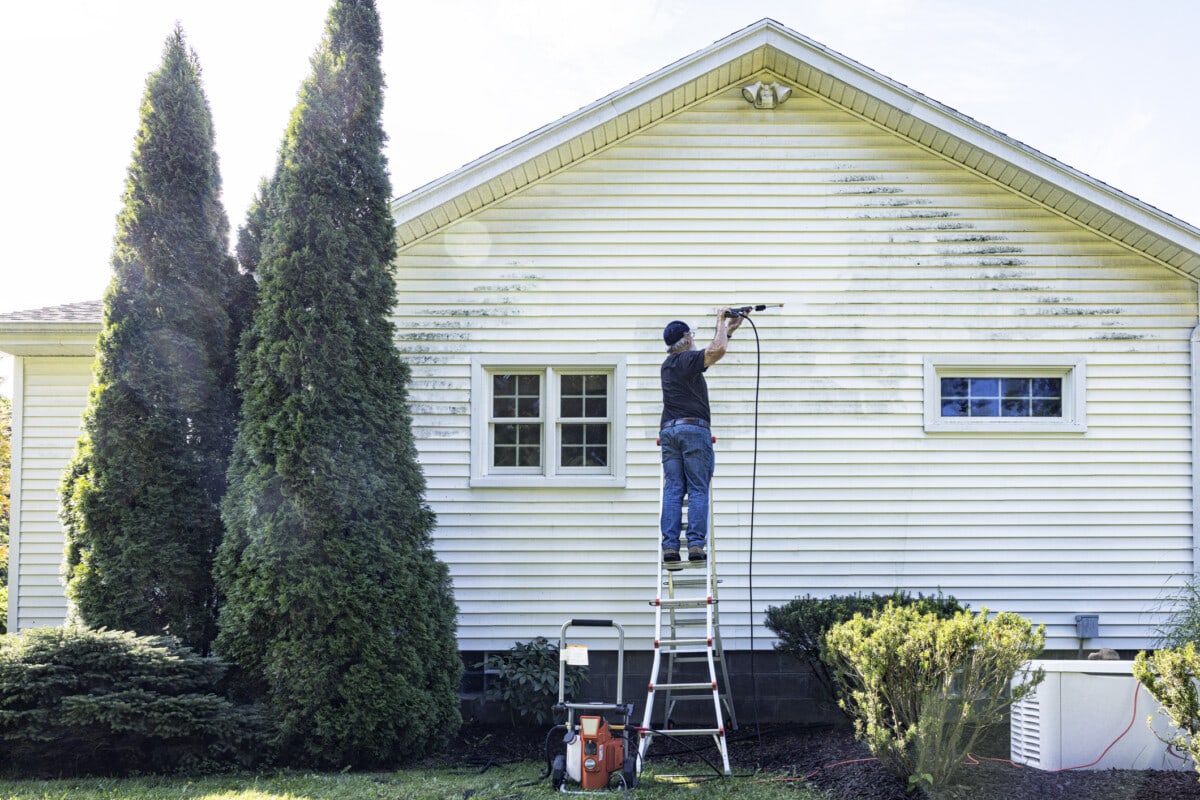
7. Go over the area again for best results
It’s essential to employ a systematic overlapping technique to achieve optimal pressure washing results. Begin by positioning the nozzle at a consistent distance from the surface and directing the spray at a slight angle to prevent potential damage. As you move the nozzle in a steady, overlapping pattern, ensure that each subsequent pass covers a portion of the previously cleaned area.
“For the best results, try to overlap at least 25%-50% of the previous pass,” shares US Janitorial Services. “In case you miss a spot in the previous pass, you will still have gone over the whole surface area in the end.”
8. Consider the time of year
The changing seasons can significantly influence the condition of surfaces and the effectiveness of the cleaning process. Spring and summer are commonly preferred due to their warmer temperatures, which aid in drying surfaces faster and facilitating the removal of dirt and grime. However, autumn might be suitable for addressing fallen leaves and preparing surfaces for winter. Conversely, winter can pose challenges with freezing temperatures and damp conditions, which may hinder proper drying and cause surfaces to become even dirtier.
9. When in doubt, hire professionals
Hiring professional pressure washing companies is advisable when unable to tackle the task independently for several reasons. Their expertise ensures the correct equipment, techniques, and cleaning agents are employed, minimizing the risk of damage to delicate surfaces.
GreenWay Pressure Washing suggests, “When hiring an exterior cleaning company, I recommend not hiring based only on price. Over the years, I’ve seen a lot of damage to properties caused by uneducated companies. There’s much more to washing than buying a pressure washer and spraying away.”
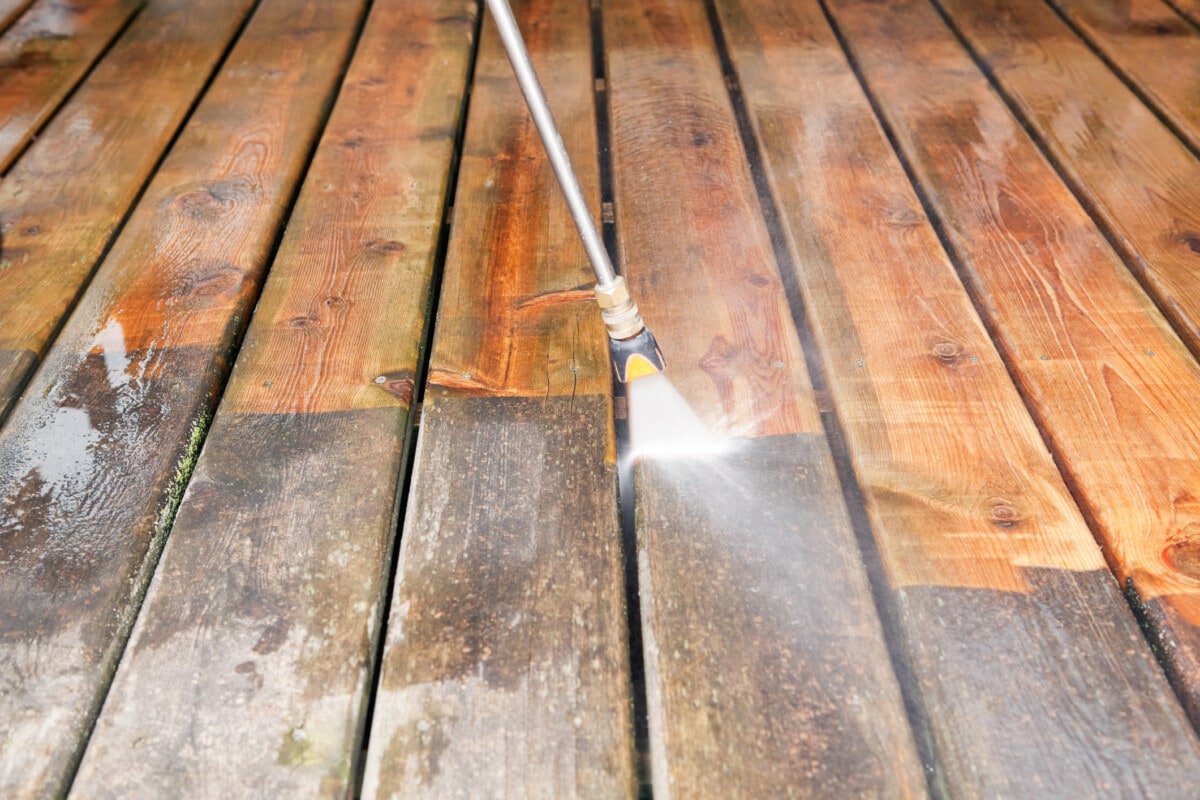
Pressure washing tips for around your property
Sidings
“The best technique to clean the exterior of your home is low-pressure washing,” shares Aqua ProWash. “Low-pressure washing techniques protect the structure of your home, and yet the cleaning detergent is still tough enough to remove the grime, moss, and algae that have built up on your house.”
Roofs
“Don’t pressure wash composite shingles,” claims Bayside Exterior Cleaning. “The water pressure is too high for the material and will likely destroy your roof. Instead, stick to gentler options for removing moss, such as sweeping and sprays. Suppose you find you want to avoid climbing onto the roof yourself. In that case, you’ll want to hire the pros.”
Clearview Washing shares, “Did you know those ugly streaks on your roof are bacteria (Gloeocapsa Magma) eating away at the material? When hiring a company, ensure pressure washing is used on the roof. If left untreated, the bacteria will severely damage your roof and cost thousands of dollars in premature replacement.”
“When washing your roof or home, it is best to use a soft wash method with special soaps for several reasons,” says Oleyn’s Pressure Washing. “First, soap will help break down dirt and grime, allowing very light pressure to be removed. (Think of laundry, you wouldn’t wash clothes without detergent). Also, it prevents damage from using very high pressure, allowing it to clean much less aggressively. Another Benefit of soft washing is that it allows your roof or home to be cleaned longer because our detergents attack grime at the root and do not just clean the top layer. It cleans deep down the pores of the surface of your home or roof.”
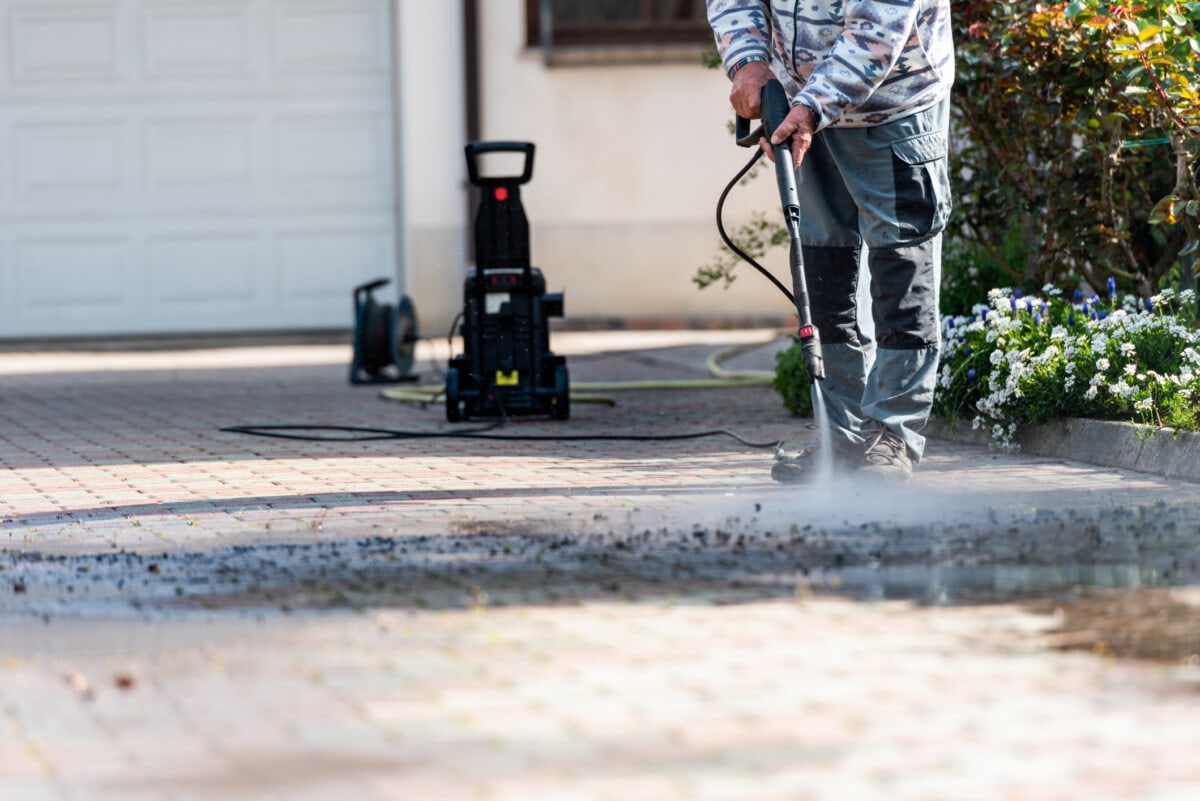
Driveways
Power washing your driveway requires a systematic approach to remove dirt, stains, and debris effectively. Begin by clearing the area of any loose objects and sweeping away loose dirt. Use a power washer with an appropriate nozzle (25 degrees or 40 degrees) to reduce the risk of surface damage. Hold the nozzle consistently from the surface, usually around 12-18 inches, and use overlapping passes to ensure even cleaning. For stubborn stains, such as oil or grease, pre-treat with a suitable detergent or degreaser before power washing.
Patios
Begin by sweeping the patio to eliminate any loose debris. It’s crucial to prioritize safety, underscoring the importance of wearing protective gear and handling the pressure washer correctly. Moreover, consider covering the surrounding areas to shield them from debris or overspray damage. Opt for an appropriate detergent that matches the patio’s surface type. The subsequent steps involve applying the chosen detergent, followed by the actual pressure washing and a thorough rinse. Ultimately, ensure the patio is meticulously dried to conclude the cleaning process.
The post 9 Pressure Washing Tips Professionals Want You to Know appeared first on Redfin | Real Estate Tips for Home Buying, Selling & More.
